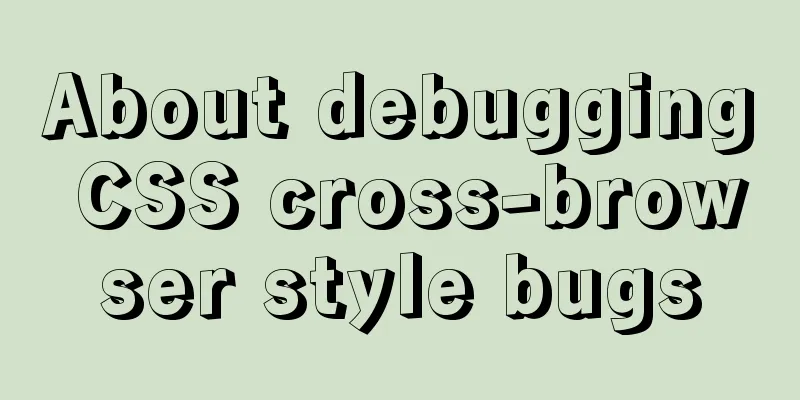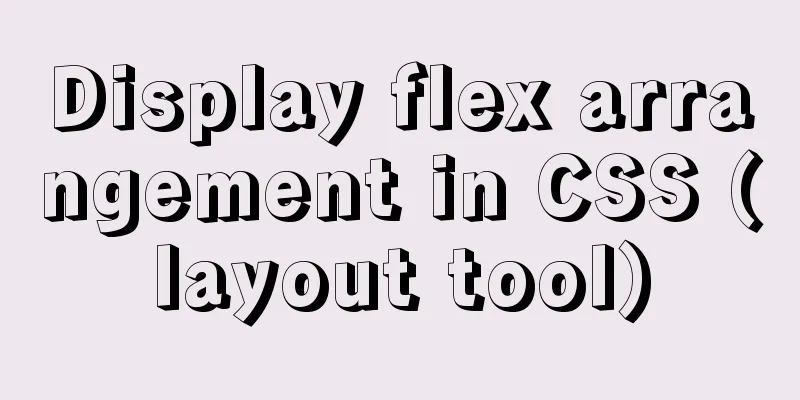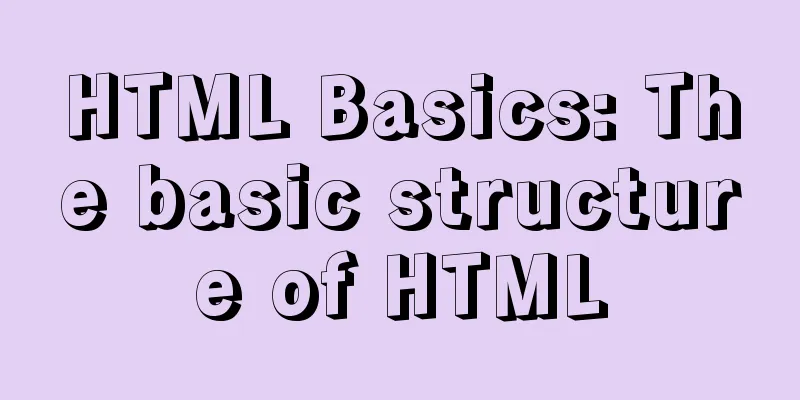About debugging CSS cross-browser style bugs

|
The first thing to do is to pick a good browser. My choice is Chrome because of its powerful debugging tools. When I'm done debugging in Chrome, I'll move on to debugging in Safari or Firefox. If you don't get the expected results on these "good" browsers, it's likely that the code itself violates CSS rules. Rather than trying to hack around problems that occur on these "good" browsers, you should try to identify the cause of the problem. I usually check the following possible BUG sources:
Next comes the text The most important thing to remember is that the W3C standard does not define error behavior. Therefore, if you don't follow the specification, it may cause different effects across browsers; if you combine "strange" properties (such as margin and inline element), it may also cause cross-browser bugs. Display I think of writing CSS as choosing a journey. You need to make some decisions. For example, you first need to choose the elements to use with different display modes: block, inline, inline-block and table. Once you have made your selection, you can use some specific methods to change its actual display. Block elements should use margin, padding, height, and width. However line-height does not apply. Inline elements should use line-height, vertical align, and spacing. However, margin, padding, height and width do not apply. First, tables have vertical and horizontal alignments. Second, if you miss an element in the table, the entire table may appear strange. Finally, margin does not apply to table rows and columns, and padding does not apply to tables or table rows. Positioning If you choose to use block-level elements, next you need to choose a positioning method:
I won't list all the display and position combinations here. In summary, there are two things to note:
For example, is it appropriate to combine float, table-cell, and inline elements? How will the browser interpret the rendering? Is there any definition in the W3C standard? If not, then you run the risk of cross-browser bugs. Of course, such a combination is not impossible, but you need to think clearly about why you want to do so and do enough cross-browser testing. Internet Explorer Once you have resolved the issues with the "good" browsers, it's time to move on to the IE platform. My advice is to start with the oldest version of IE that you wish to support, as many issues with older versions of IE carry over to newer versions. Even for IE, you should try to isolate the problem rather than relying on using hacks. Blindly using the * and _ hack is like adding a fixup (see below) to a function that returns an incorrect value, instead of identifying the algorithmic error. Copy code The code is as follows:return result + 4; Of course, sometimes it is necessary to use hacks in IE6 and IE7. For IE8, hacks are usually only used where CSS3 compatibility is required. Usually, the places where hacks are needed in IE6/7 are:
There are also some less common situations where hacks are needed, such as when there is a comment code between two floating elements, which will trigger the duplicate content bug. For CSS problems that only occur in IE, my advice is to carefully describe what you see and search Google for the corresponding solution. Don't blindly use hacks to cover up a bug before you find the cause of it. IE's built-in debugging tools are terrible, so you may need to add a background color to the element to make it easier for you to see the actual layout on the page. Implementing the solution Once you find the cause of the bug and know how to fix it, you should also know how to modify the code without destroying existing code that works properly. Here are my suggestions: 1. Dependent style cascading 2. Use browser-specific prefixes 3. Use * and _ for IE6/7 4. Don’t use \9 for IE8 5. Know when to abandon IE hacks 6. Do not use any hacks on the latest versions of Firefox, Chrome, Safari 1. Dependent style cascading First, try to rely on the style cascade whenever possible. Browsers always take the last declared style that they can understand. Therefore, you should start by writing styles for older browsers, so that the browser can read and use the last styles it can understand. For example: Copy code The code is as follows:.foo{ background-color: #ccc; /* older browsers will use this */ background-color: rgba(0,0,0,0.2); /* browsers that understand rgba will use this */ } 2. Use browser-specific prefixes Use browser-specific prefixes, especially for properties that are not yet widely adopted. For example: Copy code The code is as follows:.foo{ background: #1e5799; /* Old browsers */ background: -moz-linear-gradient(top, #1e5799 0%, #2989d8 50%, #207cca 51%, #7db9e8 100%); /* FF3.6+ */ background: -webkit-gradient(linear, left top, left bottom, color-stop(0%,#1e5799), color-stop(50%,#2989d8), color-stop(51%,#207cca), color-stop(100%,#7db9e8)); /* Chrome,Safari4+ */ background: -webkit-linear-gradient(top, #1e5799 0%, #2989d8 50%, #207cca 51%, #7db9e8 100%); /* Chrome 10+, Safari 5.1+ */ background: -o-linear-gradient(top, #1e5799 0%, #2989d8 50%, #207cca 51%, #7db9e8 100%); /* Opera 11.10+ */ background: -ms-linear-gradient(top, #1e5799 0%, #2989d8 50%, #207cca 51%, #7db9e8 100%); /* IE10+ */ background: linear-gradient(top, #1e5799 0%, #2989d8 50%, #207cca 51%, #7db9e8 100%); /* W3C */ } Note that there are two syntaxes in this code for different versions of WebKit. The order of prefix codes should also be written starting from the old versions of browsers (see the first one). 3. Use * and _ for IE6/7 For bugs specific to older versions of IE, use * and _ to fix them. for example: Copy code The code is as follows:.clearfix { overflow: hidden; /* new formatting context in better browsers */ *overflow: visible; /* protect IE7 and older from the overflow property */ *zoom: 1; /* give IE hasLayout, a new formatting context equivalent */ } All IE hacks are targeted at a certain version and all previous browsers, such as: _ For IE6 and earlier * For IE7 and earlier \9 for IE8 and earlier (note that IE9 is also sensitive to this hack on some CSS properties) Therefore, the order of hack code should also start from writing for old versions of browsers (refer to the first item). 4. Don’t use \9 for IE8 I would never use \9 to work around styling bugs in IE8. I would only use \9 as a "fallback" to compensate for browser support. For example, I used box-shadow (which works fine on more advanced browsers), but it looked ugly in IE8, so I used \9 to add a new border. This situation cannot be handled by the style cascade (see the first item) because this is adding a new style, not modifying an existing style. 5. Know when to abandon IE hacks Don't try to get the exact same effect in IE. Are you willing to waste extra HTTP requests and complex HTML/JS/CSS code snippets just to achieve the same rounded corner box effect in IE6-8? For me personally, my answer is "no". You should know when to abandon a hack for a feature. For example, don’t use filters to simulate gradient effects in CSS3, as that can cause performance issues and typographical bugs. The simplest approach is to not expect your pages to behave exactly the same in all browsers. For users of IE 6-8, the best approach is to give them a simplified user experience (note, simplified, not incomplete). The following bad code uses filters to simulate CSS3 gradients: Copy code The code is as follows:.foo { filter: progid:DXImageTransform.Microsoft.gradient( startColorstr='#1e5799', endColorstr='#7db9e8',GradientType=0 ); /* IE6-9 */ } 6. Do not use any hacks on the latest versions of Firefox, Chrome, Safari For style bugs on Firefox, Chrome, and Safari, the best thing to do is to check carefully. It is very likely that this is because your code violates the rules of CSS. |
<<: Tomcat's class loading mechanism process and source code analysis
>>: Mini Program to implement Token generation and verification
Recommend
The difference and introduction of ARGB, RGB and RGBA
ARGB is a color mode, which is the RGB color mode...
Java uses Apache.POI to export HSSFWorkbook to Excel
Use HSSFWorkbook in Apache.POI to export to Excel...
The qualities and abilities a web designer should have
Web design is an emerging marginal industry that c...
How to install nginx on win10
Because the company asked me to build a WebServic...
MySQL users and permissions and examples of how to crack the root password
MySQL Users and Privileges In MySQL, there is a d...
Introduction to RHCE bridging, password-free login and port number modification
Table of contents 1. Configure bridging and captu...
Simple example of adding and removing HTML nodes
<br />Simple example of adding and removing ...
A Deep Understanding of Angle Brackets in Bash (For Beginners)
Preface Bash has many important built-in commands...
Share MySql8.0.19 installation pit record
The previous article introduced the installation ...
Detailed explanation of using pt-heartbeat to monitor MySQL replication delay
pt-heartbeat When the database is replicated betw...
How to configure VMware virtual machine NAT mode
This article describes the VMware virtual machine...
Example of how to implement underline effects using Css and JS
This article mainly describes two kinds of underl...
RHEL7.5 mysql 8.0.11 installation tutorial
This article records the installation tutorial of...
Example of how to configure multiple virtual hosts in nginx
It is very convenient to configure virtual host v...
Vue encapsulation component upload picture component
This article example shares the specific code of ...









